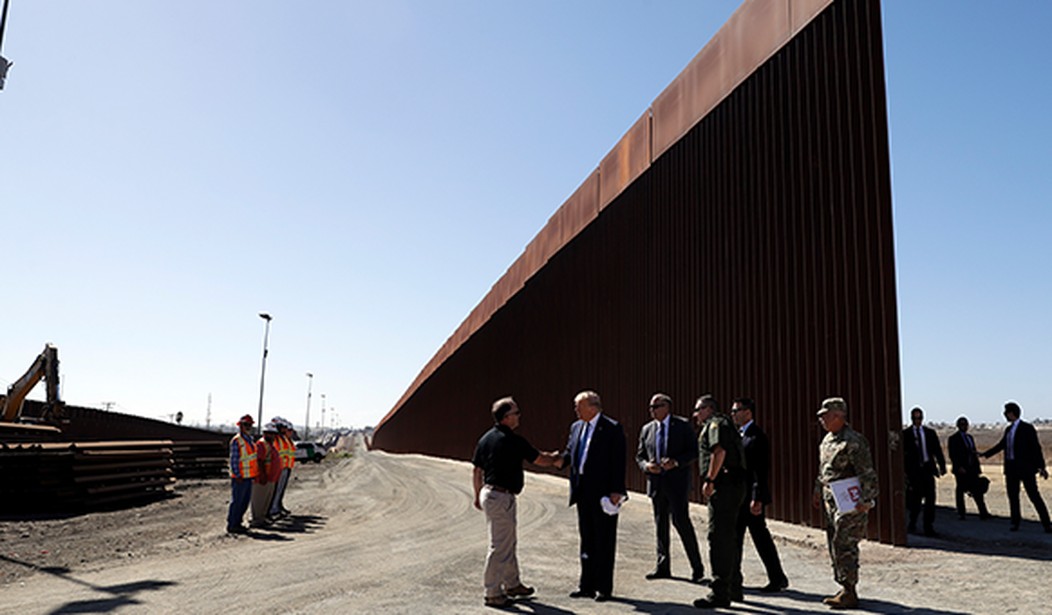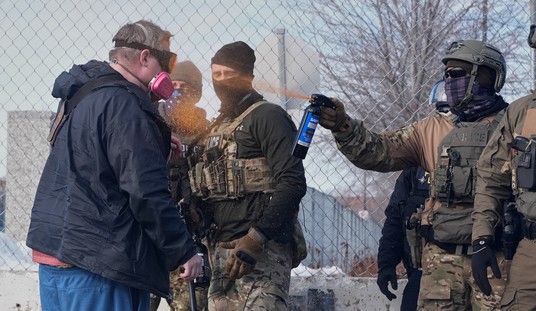The senator was adamant.
"People should not have to force the federal government to live up to our responsibilities to enforce our borders and our laws. Period," she said.
"We do not have the luxury of debating this issue for another two years or four years," she added. "Rather we have the responsibility to take action now."
She wanted the government to enforce the border and the laws against employing illegal immigrants.
"Illegal immigration, however, is a matter of law enforcement," she said. "Whether it is enforcing our borders, enforcing our laws against working illegally or hiring someone to work illegally."
"It is the federal government's responsibility to enforce these laws," she insisted.
Yet, just three years into office, this senator seemed to have lost faith in Washington's commitment to that responsibility.
"Unfortunately," she said, "this job has not been done well over the years, and the prohibitions against illegal immigration, while on the books, have meant very little in reality.
"The cost of the failure to act on this responsibility has been very high," she said.
Was this the Senate's version of President Donald Trump? Who was this firebrand?
It was Sen. Dianne Feinstein -- the former Democratic mayor of San Francisco, who was first elected to the Senate in 1992.
On Sept. 30, 1996, Feinstein stood on the Senate floor and -- in the words cited above -- advocated enactment of the Illegal Immigration Reform and Immigrant Responsibility Act.
It called for a triple fence along the U.S.-Mexico border south of San Diego.
On May 1, 1996, Feinstein had given a floor speech advocating an amendment she and fellow Democratic Sen. Barbara Boxer of California had offered for this bill.
Recommended
"Earlier I sent an amendment to the desk on behalf of Senator Boxer and myself which relates to the triple fencing of the Southwest border, particularly in the vicinity of San Diego and Mexico," Feinstein said.
"Essentially, the language would authorize the appropriation of $12 million for the construction, expansion, improvement, and deployment of triple fencing," she explained.
The final version of Illegal Immigration Reform and Immigrant Responsibility Act included language specifically authorizing this triple fence to protect the border in Feinstein's home state.
It required the attorney general (who was then responsible for border security), to "provide for the construction along 14 miles of the international border of the United States, starting at the Pacific Ocean and extending eastward, of second and third fences, in addition to the existing reinforced fence, and for roads between the fences."
President Bill Clinton signed this into law.
But just because the law commanded it, did not mean the government would do it.
"Environmental concerns and litigation resulted in significant delays in fulfilling this requirement," the Congressional Research Service explained in a 2017 report. "Over eight years after IIRIRA was enacted, the DHS had not completed the fencing project."
So, in 2006, Congress enacted the Secure Fence Act. This reduced the number of layers in the required border fence from three to two but vastly expanded the number of miles it was required to cover.
"CBP estimated that covered roughly 850 miles," said the Congressional Research Service.
Two years later, in an appropriations act, Congress amended the fence law again. This time, it reduced the number of layers from two to one, reduced the length of mandated fence from 850 miles to "not less than 700 miles" and gave the secretary of Homeland Security discretion over where it should be built.
The law also did not specify the architecture of the fence. So, the Department of Homeland Security built some "fencing" that was not designed to stop people from crossing the border.
"Some disagreement has arisen over DHS's use of 'vehicle fencing' to satisfy IIRIRA's fencing requirements," said the Congressional Research Service report. "Vehicle fencing is a type of barrier designed to inhibit the illegal crossing of vehicles into the United States, but not pedestrians."
Five days after he took office, Trump reinvigorated the effort to build a border barrier. He issued an executive order that said: "It is the policy of the executive branch to: secure the southern border of the United States through the immediate construction of a physical wall on the southern border, monitored and supported by adequate personnel so as to prevent illegal immigration."
This Republican president in 2017 sounded a bit like Dianne Feinstein in 1996.
"The nearly $4.5 billion in appropriations provided by Congress for border barrier planning and construction since the signing of the E.O. exceeds the amount provided for those purposes from FY 2007 to FY 2016 combined by almost $2 billion," the Congressional Research Service said in a report published this January.
Even so, this was merely a modest down payment on enforcing the laws Feinstein had called out the government for not enforcing -- almost a quarter-century ago.
In fiscal 2006, the year Congress enacted the Secure Fence Act, the Border Patrol apprehended 1,071,972 deportable aliens illegally crossing the U.S.-Mexico border.
By fiscal 2017, the year Trump took office, total apprehensions had dropped to 303,916.
In fiscal 2019, they climbed back to 851,508.
At the end of fiscal 2019, according to the Border Patrol, there were 654 total miles of "primary" barriers along the U.S.-Mexico border. Of these, 374 miles would stop pedestrians, and 280 miles would stop vehicles; 37 had a "secondary" pedestrian fence; and 14 had a "tertiary" pedestrian fence.
The full border is 1,954 miles long.
Trump needs to keep fighting the Washington establishment to build his border wall and establish for history that he meant what he said when he beat that establishment in the 2016 election.
Terence P. Jeffrey is the editor in chief of CNSnews.com. To find out more about him, visit the Creators Syndicate website at www.creators.com.

























Join the conversation as a VIP Member